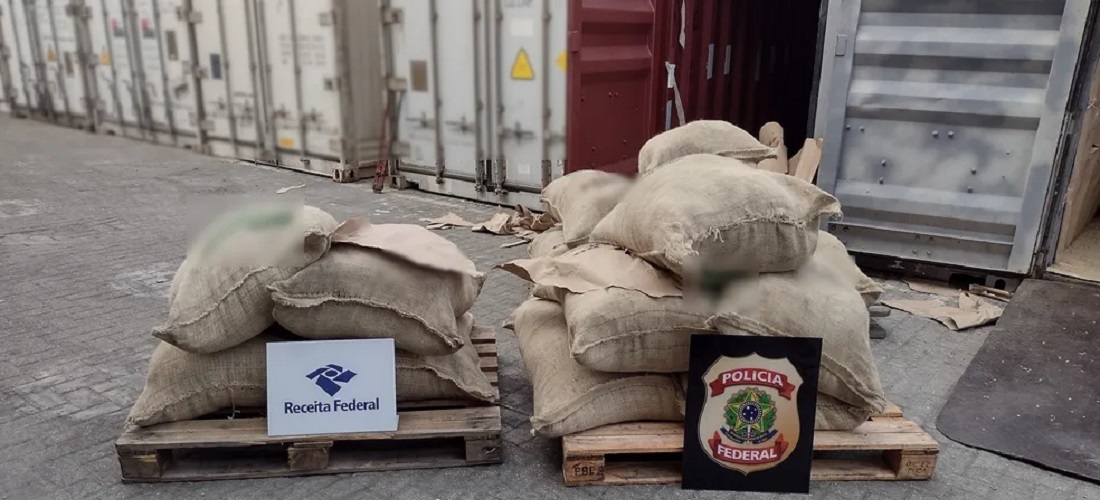
Brazil: Cocaine Exports from Santos Port at All-Time High
Nov, 01, 2023 Posted by Sylvia SchandertWeek 202341
Criminal groups are increasingly using the Santos Port in São Paulo state, Brazil, the largest in Latin America, to send cocaine to West Africa, the Global Initiative against Transnational Organized Crime indicated in a new report.
According to the report, seizures on the Brazil-West Africa trade route increased dramatically from 435 kilograms in 2014, to more than 27 tons in 2019 — an all-time high. The First Capital Command (PCC), the country’s largest criminal organization, which in the last decade has moved drugs from Colombia, Peru, and Bolivia to Europe, controls trafficking in this port.
The report indicates that the increase in trafficking to West Africa reflects a change in Brazilian criminal networks, which are looking for new routes in the face of greater control in European ports. Drug trafficking in Santos Port thus exploits weaknesses in West Africa, with has less inspection capabilities and more opportunities for corruption and impunity. Most of the drugs are hidden in containers with legal cargo, but also in refrigeration systems and ship hulls.
“Criminal groups take advantage of the high volume of cargo in ports and airports to hide drugs in legally exported goods [logs, commodities such as soybeans, corn, ore] and try to circumvent inspection. Brazil is one of the largest exporters of commodities in the world and this means that the logistics infrastructure is large and diversified, which in turn facilitates the circulation of illicit products. Crime takes advantage of the formal economy to circulate illicit goods, such as drugs, and also to launder money,” Renato Sergio de Lima, a professor at the Getúlio Vargas Foundation’s São Paulo School of Business Administration and director of the Brazilian Public Security Forum, told Diálogo.
The Santos Port reached a record of 5 million TEUs in 2022. Criminal groups other than the PCC also export drugs through the port but must negotiate or form some kind of partnership with the group’s members.
“The Brazilian factions control the wholesale and retail of drugs in the national territory and coordinate with transnational groups, both in the acquisition from cocaine-producing countries and the groups that are going to distribute and sell the drugs outside Brazil. The Brazilian factions function as quasi-mafia groups, which control considerable slices of the drug market in Brazil and its connections with the world,” Lima said.
The report shows that although only Senegal was among the top 10 destinations for cocaine seized in Brazilian ports in 2018, Nigeria, Ghana, and Sierra Leone made their way up the list of transshipment routes. More than 60 percent of narcotics shipments originating in Brazil were bound for or sent through West African countries on their way to Europe.
Brazilian authorities have been working to combat narcotrafficking at the Santos Port. The Federal Revenue Service has customs inspections on a daily basis and works with customs in various countries and with organizations such as the United Nations Office on Drugs and Crime and Interpol, which help with intelligence and enforcement work, looking not only for seizures, but also for the origin of the crime and the source of the groups’ funds. According to the report, at least 24 tons of cocaine were seized in West African seaports in 2021.
In September 2023, in São Vicente, on the coast of São Paulo, the Brazilian Military Police arrested Diego Machado de Sá, alias Nariga, who was identified as one of the leaders of the PCC linked to international cocaine trafficking to Europe and Africa through the Santos Port. According to data from the Federal Police, this year, up until May, authorities seized 10.5 tons of cocaine in 16 Brazilian ports, 6 tons of which in Santos Port alone.
“On October 2, the federal government announced a broad program to combat criminal organizations — ENFOC — which aims precisely to bring together and integrate the different actors and agencies that can act to prevent and confront organized crime,” Lima said.
The program has a budget of $174 million, structured in three cycles, from 2023 to 2026, with five lines of action: institutional and informational interaction; efficiency of police agencies; work at ports, airports, and borders; efficiency of the justice system; and cooperation between the Union, states, and municipalities and with foreign agencies.
“This plan is about 80 pages long and has been three months in the making. It is not an answer to the crises, but it’s useful to deal with them. And what is at the heart of our concern? The focus, the emphasis against criminal organizations, based on a double pillar: intelligence and investigation,” Brazilian Minister of Justice and Public Security Flávio Dino said at the launch of the program.
The Santos Port is one of the main concerns. The government is negotiating with the Ministry of Ports and Airports to define measures, including high-tech equipment to detect drugs in cargo.
Source: Diálogo-Americas
To read the original news publication, please check: https://dialogo-americas.com/articles/brazil-cocaine-exports-from-santos-port-at-all-time-high/
-
Ports and Terminals
Jul, 23, 2021
0
Paraná registers record-breaking fertilizer imports
-
Other Cargo
Mar, 05, 2024
0
Gelatin and collagen market now opened to Brazilian exporters
-
Tradelane Graphs
Dec, 04, 2018
0
DataLiner Tradelane Graphs | January to August 2018
-
Dec, 03, 2021
0
Interfax: Russia may set grain export quota at 14mi tons


